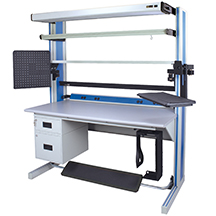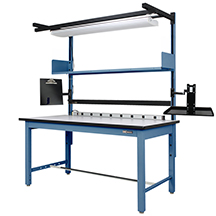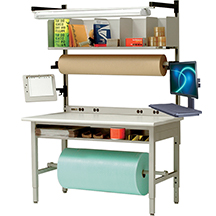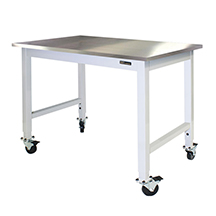Ergonomics: It’s Worth It
By Joy M. Ebben, Ph.D, CPE
Human Factors and Ergonomic Specialist, IAC, a Divsion of Treston, Goodyear, Arizona
Research clearly demonstrates that specific interventions can reduce the reported rate of work-related musculoskeletal disorders (MSDs) for workers who perform high-risk tasks. Successful interventions require attention to individual, organizational and job characteristics, tailoring the corrective actions to those characteristics.
If your business does not take advantage of the opportunities made available via a cost-effective ergonomics and safety program, you lose out on two opportunities:
- Reducing the costs of related injuries/illnesses.
- Increasing productivity.
Reduction Of MSD Workers' Compensation Costs
Approximately 85 percent of the companies planning to purchase assembly equipment (including workstations) during 1999 listed reducing direct labor as the main cost-cutting target. One component of direct labor is workers’ compensation costs. The reviewed case studies show that workers’ compensation costs were reduced by implementing safety and health programs that included ergonomic improvements.
Productivity
As an ergonomics program evolves, goals need to change as well, from reducing workers’ compensation costs to increasing productivity and quality. Also, if a company justifies its ergonomic efforts on the costs related to the occurrence of an accident or illness, it usually waits until an incident occurs before ergonomic improvements are considered. Then, without additional incidents, emphasis on ergonomics diminishes.
Focusing on productivity provides a quality improvement criterion that is independent of accidents and illnesses and hopefully will ultimately prevent or reduce the rate of occurrence of those incidents. For example:
- Assembly workstation. A workstation for fine assembly was redesigned to utilize a TV camera and monitor. A comparison of the new and old workstation showed a 15 percent higher productivity rate. Considering that the value of products assembled per worker per shift at these types of workstations ranged between $15,000 and $20,000, the additional value produced by one worker per day using the new workstation would be $2,250 to $3,000 per day.
 Buy Online Now!
Buy Online Now!
 Buy Online Now!
Buy Online Now!











